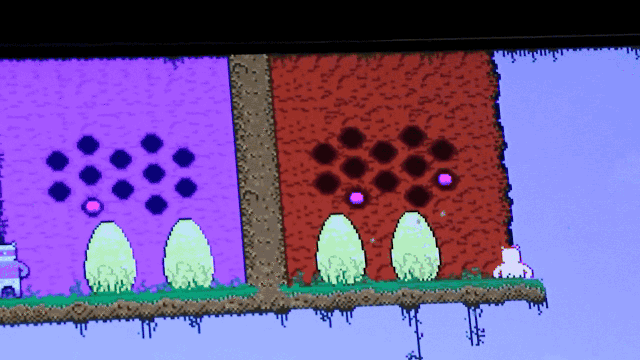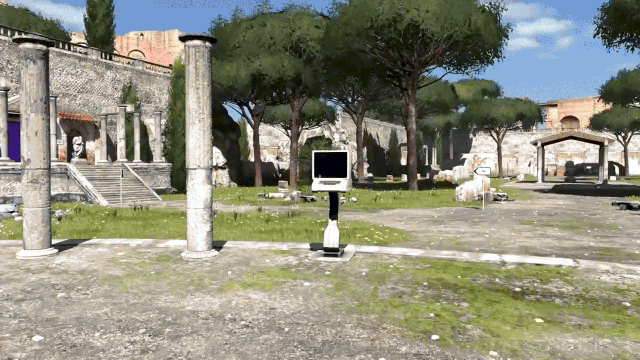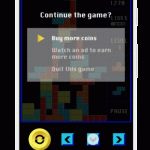New Players: Rising Indie Game Designers To Watch
From giant arcade consoles to video games that look like comic books, IGF’s Design Award nominees are innovating tomorrow’s next big games.
Every year, the Independent Games Festival, which just took place in San Francisco, celebrates the strangest, most exciting and most innovative games made by independent studios around the world. Some of these games are fairly popular, selling hundreds of thousands of copies through the iPhone’s app store or the PC hub Steam. Others have only ever been played by a handful of people. They are each wildly different in theme, story, mechanics and tone, but this diverse collection is a demonstration of what creative people can do when they are given the freedom to challenge the norm. These designers create ingenious game innovations with few resources, inventing astonishing new mechanics and visual aesthetics which will go on to influence others. With that in mind, let us introduce you to the fascinating studios and stories behind the brilliant games nominated in this year’s Excellence in Design.
Loveshack Entertainment

The bang of a gun; smoke trailing from a lit cigarette; the haze of a neon diner sign through fog. In Framed, a shrewdly creative game for iOS from Melbourne-based studio Loveshack Entertainment, players have the power to tell their own Noir-tinged story of back-alley mystery and perilously narrow escapes. Loveshack is a trio comprised of Ollie Browne, Adrian Moore, and Joshua Boggs, who all contribute to the design aspects of its games. The three met while working on the popular iOS game Spy Mouse, and, as the designers write on their site, the unique conceit was to flip the usual video game script from controlling a character’s actions in the game—run, jump, shoot—to manipulating the context and narrative around those actions.
The ingenious mechanism that makes this possible is the game’s comic book-inspired visual format which requires you to arrange them correctly to allow the game to move forward. Order the panels the wrong way and your character falls off a ledge. Piece them together correctly and an innocuous pigeon in one frame could reveal itself as the key to your survival. The scene plays out like a short animated film, one you can edit again and again.
“Noir just made sense,” Loveshack co-founder Ollie Browne told Co.Design. “In a way it was also a design solution in itself—we had this new type of gameplay, and we figured that it would be easiest for the player if they could experience it within a world that already had an established tone.” An additional challenge for the studio was its decision to exclude text from the game. Framed relies entirely on visual design and game mechanics to tell its story. And that’s in part what makes this puzzler feel so alive: the narrative is ultimately in the mind of the player. Like a comic artist drawing the first stroke on a blank sheet of paper, playing Framed, your mind is the tool that makes all of these thrills possible.
Joshua DeBonis and Nikita Mikros

Killer Queen is the only game nominated by IGF whose main design merits aren’t so digital. Designed by Brooklyn-based Joshua DeBonis and Nikita Mikros, the draw of Killer Queen is its monster-sized arcade cabinet, which stretches ten feet long, sits six feet tall, and allows 10 people to play at once.
While the game’s 2-D graphics that look like they could have emerged from a 90s basement, it’s the way Killer Queen is played that’s so innovative. Two teams of five must play together to win against the other using a variety of military and individual strategies, bucking every trend towards smaller and more individualistic games that have dominated in recent years due to smartphones. In a time when most multiplayer gaming is done over the internet, this IRL social aspect is why Killer Queen is such a sensation.
But you won’t find Killer Queen in your local arcade alongside Centipede and Street Fighter, or at least, not yet. Fewer than ten of the cabinets currently exist in the world. “It’s kind of legendary,” says Debonis. “Most people think that their cabinet is the only one that exists.”
Croteam

On the surface, it may seem that the Croatian game studio Croteam‘s latest game, The Talos Principle, came out of nowhere. But the studio’s prior work included the beloved Serious Sam games, which are straightforward first person shooters set in a familiar, unremarkable worlds.
The Talos Principle, on the other hand, is a puzzler that is based in philosophical questions of existence. But according to developers Davor Hunski and Alen Ladavac*, this new game was actually born from a series of levels used to test a new weapon in the last Serious Sam game which could disable forcefields and enemies. Along the way the team realized they had enough ideas for an entirely new game. These experiments laid the groundwork for how The Talos Principle would be played. Instead of adding a few new mechanics to Serious Sam, Croteam ended up bringing to life a new beast entirely, where simple actions like disabling a force field are the result of complex puzzles that can take hours to solve.
Croteam created an abundance of new puzzles, tested them on each other, with a bot, and eventually on an alpha audience. They used these opportunities to fix major problems, even very late in the design process, adding in new elements and taking out whole levels until they were satisfied the game was both fun and playable. Ladavac compares this process of predicting pitfalls to building a bridge. “The moments when your feedback tells you your game is completely wrong are what I call ‘Tacoma Narrows’ moments,” he said, referring to the Washington bridge that fell apart four months after it was built in 1940. “But you shouldn’t fear these moments,” Ladavac said. “You should welcome them.”
Klei Entertainment

Vancouver studio Klei Entertainment was started by game developer Jamie Cheng under the premise that making games should be a normal job. He borrowed $10,000 from his brother and sold the stock he had from his former employer, THQ, to open his own studio in 2005. Despite suffering early setbacks, such as the death of its game Sugar Rush, the small company prevailed, eventually releasing acclaimed games Mark of the Ninja and Don’t Starve.
Invisible Inc., is a sleek, turn based stealth game, meaning players try to remain hidden from enemies, and strategies must be planned long in advance to make the most of each turn. The game can be incredibly tense—your two secret agents have one life each, and there’s no saving the game. If you lose, it’s back to the beginning. Because of this high stakes arrangement, the game is relatively short, only taking a few hours to complete, so players are motivated to try again. And because of this repetition, Klei’s designers had the wise idea to have the levels automatically generate themselves, so the game would be fresh with each replay.
The tension that Invisible Inc. evokes is a marker of its success, says Klei’s Community Manager Corey Rollins. “I like how many players talk about feeling pressured and under tension as though they are racing against a clock,” he says. This feeling is false: the game is turn based, and players are in fact under no time limits. “They have all the time in the world to make their choices,” Rollins says. “But through the mechanics, sound and the look, they are able to feel what their team would be feeling [were they put into the game].”
Inkle Studios

80 Days is the rare video game that uses players imaginations as much as visuals to convey its narrative. The U.K.-based studio Inkle is responsible for the game, which is a text-heavy adaptation of Jules Verne’s classic novel for iOS and Android.
Co-founder John Ingold told Co.Design that using prose in games can stretch a game’s design beyond the technical limits of the game. “Suddenly, your game is filled with sinking airships, sea-monsters, catacombs, rockets,” he said. “You can have casts of hundreds and thousands and talk to all of them, and all because you let the words – and the reader’s imagination – do the heavy lifting.”
The highly individualized branching narrative of each player’s journey around the world is altered by every decision they make, even things like the choices they make about what their characters say or feel. In total, 500,000 words are written into the game, but each player may only see about 3% of these on an average playthrough.
Layered on this intricate storytelling are beautiful, Art Deco inspired visuals mixed with a bit of Steampunk style. Ingold says that despite its text heavy nature, the visual components are an equally important part of 80 Days’ design. “We went through about fifteen different iterations of the main text interface before we found something which allowed us the flexibility and clarity that we needed to get a lot of words on screen at once,” he said. “Text is, first and foremost, a visual medium, and things like typesetting, font size, and sentence and paragraph length are important to get right to make the text appear immediately palatable,” he added.
Alex Beachum and Sara Scialli

You have 20 minutes left to explore the universe before the sun explodes. What will you do? This is the premise of Outer Wilds, a game where players are presented with many options but few guidelines.
In your adventures you encounter supernovas, quantum moons, and maybe even roast some marshmallows. There’s no winning or losing; only curiosity drives players forward as they explore the final moments of the universe again and again.
Creative Director Alex Beachum and producer Sarah Scialli, former graduate students at USC in Interactive Media, drew together a team of nearly thirty people to bring this vision to life. Beachum, a backpacker, used his own enthusiasm for the great outdoors to inform the game’s setting, which continually broadens in scale—from the tiny planet you begin on to the sun’s inevitable explosion—to heighten the your awareness of the game’s universe.
Without rules or objectives, Beachum relied on the power of suggestion to get players to explore this universe. “We wanted to make players curious about other parts of the world without outright telling them to investigate,” he says. “Things still happen even if you’re not there to witness them, and as a player you must learn to adapt to a constantly changing cosmos,” he told Co.Design. “The finite nature of each playthrough lends the game a sense of urgency that’s uncommon for a pure exploration game.”
*In a previous version of this article, we referred to Croteam’s developer as Aren Ladavac. He is Alen Ladavac. We regret the mistake.
Fast Company , Read Full Story
(198)













